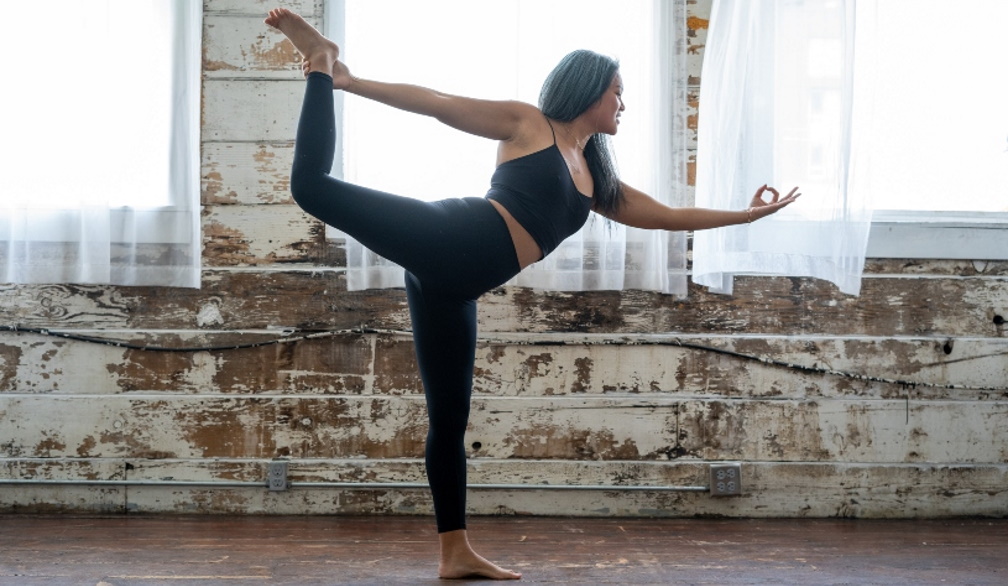What is callisthenics? And how does it compare to running or lifting weights?
- Written by Mandy Hagstrom, Senior Lecturer, Exercise Physiology. School of Health Sciences, UNSW Sydney

Callisthenics is a type of training where you do bodyweight exercises to build strength. It’s versatile, low cost, and easy to start.
Classic callisthenics moves include:
- push ups
- bodyweight squats
- chin ups
- burpees
- lunges using only your bodyweight.
Advanced callisthenics includes movements like muscle-ups[1] (where you pull yourself above a bar) and flagpole holds[2] (where you hold yourself perpendicular to a pole).
In callisthenics, you often do a lot of repetitions (or “reps”) of these sorts of moves, which is what can make it a hybrid strength and cardio workout. In the gym, by contrast, many people take the approach of “lifting heavy[3]” but doing fewer reps to build serious strength.
Traditionally, callisthenics was more of a muscle sculpting, strength-based work out. It is reportedly based on techniques used by ancient Greek[4] soldiers.
The Oxford Dictionary[5] says the term callisthenics – which is said to be based on the Greek word κάλλος or kállos (meaning beauty) and σθένος or sthenos (meaning strength) – first started showing up in popular discourse the early 1800s.
Callisthenics is often associated with high intensity interval training (HIIT) routines, where jumping, skipping or burpees are combined with bodyweight strength-building exercises such as push ups and body weight squats (often for many reps).
Callisthenics exercises draw on your natural movement; when children climb on monkey bars and jump between pieces of play equipment, they’re basically doing callisthenics.
What are the benefits of callisthenics?
It all depends on how you do callisthenics; what you put in will dictate what you get out.
When exercise programs combine resistance training (such as lifting weights or doing bodyweight exercises) and aerobic exercise, the result is better health and a reduced likelihood of death from a variety of different causes[7].
Callisthenics provide a low cost, time efficient way of exercising this way.
With improvements in body composition, muscular strength, and posture[8], it’s easy to see why it’s become a popular way to train.
Research has also shown callisthenics is better[9] at reducing body fat and controlling blood sugar for people with diabetes when compared to pilates.
Research has also shown doing callisthenics can reduce body fat and increase lean muscle mass in soccer players[10], although this research does not compare the benefits between different exercise program types.
That means we don’t know if callisthenics is better than other traditional forms of exercise – just that it does more than nothing.
What are the potential drawbacks?
With callisthenics, it can be hard to progress past a certain point. If your goal is to get really big muscles, it may be hard to get there with callisthenics alone. It would likely be simpler for most people to gain muscle in a gym[12] using traditional methods such as machine and free weights with a combination of various sets and reps.
If you want to progress in the gym, you can increase your dumbbells by small increments, such as 1kg. In callisthenics, however, you may find the jump from one exercise to the next too big to achieve. You risk a plateau in your training without some challenging work-arounds.
Another advantage of traditional strength training with bands, machines, or free weights is that it also increases flexibility and range of motion.
However, 2023 research[13] found “no significant range of motion improvement with resistance training using only body mass.” So, given its focus on bodyweight exercises, it seems unlikely callisthenics alone would significantly improve your flexibility and range of motion.
Unfortunately, there is no long-term research examining the benefits of callisthenics in direct comparison to traditional aerobic training or resistance training.
Is callisthenics for me?
Well, that depends on your goal.
If you want to get really strong, lift heavy[14].
If you want to increase your muscle mass[15], try lifting near to the point of “failure”. That means lifting a weight to the point where you feel that you are close to fatigue, or close to the point that you may need to stop. The key here is that you don’t have to get to the point of failure to achieve muscle growth – but you do have to put in sufficient effort.
If you want to get lean, focus first on nutrition, and then understand that either cardio[16], lifting[17] or both can help.
What if you’re time poor, or don’t have a gym membership? Well, callisthenics exercises offer some of the cardio benefits of a run, and some of the muscular benefits of a lifting session, all tied up in one neat package.
It can be a great holiday workout at a local park or playground, on public outdoor exercise equipment, or even on the deck of a holiday rental.
But, as with all exercise, there are potential benefits and limitations of callisthenics.
Callisthenics has its place, but, for most, it’s likely best used as just one part of a well-rounded training routine.
References
- ^ muscle-ups (www.google.com)
- ^ flagpole holds (www.youtube.com)
- ^ lifting heavy (theconversation.com)
- ^ ancient Greek (www.bbc.com)
- ^ Oxford Dictionary (www.oed.com)
- ^ wavebreakmedia/Shutterstock (www.shutterstock.com)
- ^ from a variety of different causes (academic.oup.com)
- ^ posture (content.iospress.com)
- ^ better (content.iospress.com)
- ^ in soccer players (www.researchgate.net)
- ^ pedro7merino/Shutterstock (www.shutterstock.com)
- ^ gain muscle in a gym (theconversation.com)
- ^ research (link.springer.com)
- ^ lift heavy (journals.lww.com)
- ^ muscle mass (www.ingentaconnect.com)
- ^ cardio (onlinelibrary.wiley.com)
- ^ lifting (link.springer.com)
















